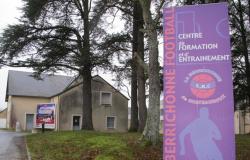In Sète, the artist Hervé Di Rosa presents au MIAM, the international museum of modest arts which he founded in 2000, an exhibition of “commercial art”, thus using the term used in 1967 by the sociologist Raymonde Moulin in her book the Paint market in France.
Titled “BEAUTIFUL/BAD/UGLY.” The other history of painting”, the exhibition focuses on artists creating painting sold in mass, that is to say reproduced in thousands of copies. Either “commercial” works whose style oscillates between that of professional painters of tourist views (like those of Montmartre) and amateur practice…
Unknown artists with works sold by the thousands
Big Eyes de Tim Burton avec Amy Adams2014
i
In 2014, with his film Big EyesTim Burton popularized the destiny of one of these artists, Margaret Keane (1927–2022), who in the 1960s painted children with big sad eyes but whose works were signed by her husband Walter, also a painter who, given the success that the paintings were having, made them his own. Others saw their works sold thousands of copies, like Thomas Kinkade (1958–2012) who celebrated the American way of life and of which it is estimated that one in twenty Americans owns a reproduction. All remain unknown in the art world, while their creations are among the most viewed images of the XXe century !
“An image that can adapt to all looks”
“There is no false art. There are only rereads. »
Herve DiRosa
In this exhibition of commercial art, we obviously find works derived from fameux poulbot de Montmartre, this Parisian gavroche created by Francisque Poulbot (1879–1946). More surprisingly, we also find Bernard Buffet (1928–1999), yet present in the collections of major “non-commercial” art museums such as the Museum of Modern Art in Paris, which dedicated a major retrospective to him in 2016. Hence this question asked by Hervé Di Rosa in the exhibition catalog: “What is true art? What is fake art, anyway? is there a false art? » And to answer: “There is no false art. There are only rereads. »
Bernard Buffet, The circus. Two Clowns (detail)1955
i
Oil on canvas • 230 × 150 cm • Coll. Bernard Buffet endowment fund, Paris • © ADAGP, Paris, 2024
For the art historian Jean-Baptiste Carobolante, commercial painting must be understood as a “ideology of reduction” : “reduce what the painting shows, reduce its complexity, reduce what it is, reduce whoever produced it and whoever looks at it; this reduction is what some call « kitsch »that is to say an image which carries within itself its exchange value, that is to say a porous image which can adapt to all looks ». The exact opposite of what we present every month in Beaux Arts Magazine, all eras combined. Because art is matter, shapes and colors, concepts, research, thought. Complex works that most often require attention and reflection.
BEAUBADUGLY – The other history of painting
From June 27, 2024 to March 9, 2025
MIAM • 23 Quai Maréchal de Lattre de Tassigny • 34200 Sète
miam.org






